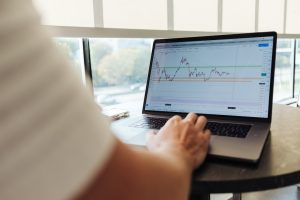Forex trading is a complex process that requires an understanding of various technical indicators, including signals. Signals are trading indicators that traders use to identify potential buying and selling opportunities in the market. Signals can be generated by a range of technical indicators, including trend lines, moving averages, and oscillators. In this article, we will discuss how to use signals in forex trading.
Understanding Signals
Signals are trading indicators that traders use to identify potential buying and selling opportunities in the market. Signals are generated by a range of technical indicators, including trend lines, moving averages, and oscillators. These indicators provide traders with a visual representation of the market’s direction and momentum, which can help them make informed trading decisions.
One of the most popular signals used in forex trading is the moving average (MA). MAs are calculated by averaging the price of a currency pair over a specific period. For example, a 50-day MA would calculate the average price of a currency pair over the past 50 days. Traders use MAs to identify trends in the market. When a currency pair’s price is trading above its MA, it is considered to be in an uptrend. Conversely, when a currency pair’s price is trading below its MA, it is considered to be in a downtrend.
Another popular signal used in forex trading is the Relative Strength Index (RSI). The RSI is an oscillator that measures the strength of a currency pair’s price movement. The RSI ranges from 0 to 100, with readings above 70 indicating that a currency pair is overbought and readings below 30 indicating that a currency pair is oversold. Traders use the RSI to identify potential reversal points in the market.
Using Signals in Forex Trading
Traders use signals in forex trading to identify potential buying and selling opportunities in the market. When a signal is generated, traders use it to confirm their trading strategy or to adjust their trading strategy accordingly. For example, if a trader is using a trend-following strategy and a moving average crossover occurs, the trader may use this as a signal to enter a long position in the market.
Traders can also use signals to confirm their trading strategy. For example, if a trader is using a breakout strategy and a currency pair’s price breaks above a key resistance level, the trader may use this as a signal to enter a long position in the market. By using signals to confirm their trading strategy, traders can improve their trading accuracy and increase their chances of success in the market.
Limitations of Signals
While signals can be useful in forex trading, they are not foolproof. Signals are generated by technical indicators, which are based on past price movements. This means that signals can be lagging indicators of the market’s direction and momentum. Traders must be aware of this limitation and use signals in conjunction with other technical and fundamental analysis tools.
Traders must also be aware of false signals. False signals occur when a signal is generated, but the market does not follow through with the expected price movement. False signals can be frustrating for traders, but they are a natural part of trading. Traders must use risk management techniques, such as stop-loss orders, to minimize the impact of false signals on their trading account.
Conclusion
Signals are an important part of forex trading. Traders use signals to identify potential buying and selling opportunities in the market. Signals can be generated by a range of technical indicators, including trend lines, moving averages, and oscillators. Traders must be aware of the limitations of signals and use them in conjunction with other technical and fundamental analysis tools. By using signals in forex trading, traders can improve their trading accuracy and increase their chances of success in the market.





